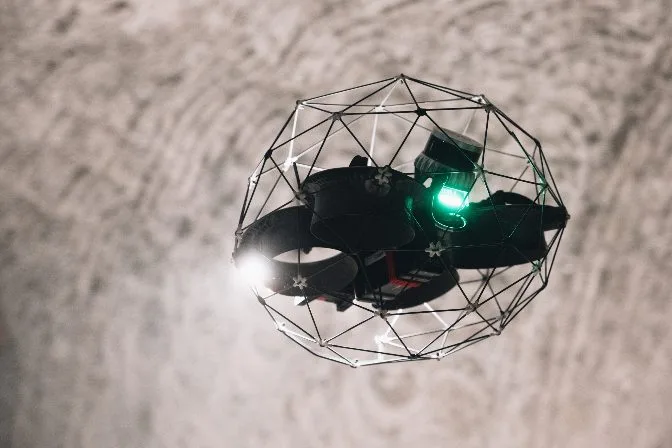Maintenance management is essentially a structured approach designed to preserve and sustain the physical assets and resources of a business. Through this system, companies can effectively oversee their equipment, workforce, contractors, and the financial aspects tied to these assets. By doing so, not only do businesses save significantly on repair and inspection costs, but they also ensure the safety, efficiency, and productivity of their employees and machinery alike. Take a look at this image to get a visual idea of how maintenance management works in practice: Maintenance management software also plays a crucial role in minimizing equipment downtime and streamlining preventive maintenance schedules. These systems are tailored to fit various industries, but the overarching goal remains consistent: reducing resource wastage. By optimizing every aspect of production, maintenance management systems ensure that a company's physical assets remain reliable and accessible at all times. Today, this is achieved through a blend of traditional practices, skilled personnel, and advanced computerized tools that work harmoniously to maximize efficiency. Let's explore why this management approach is so vital for businesses worldwide. To someone outside the maintenance sector, equipment malfunctions might seem like mere inconveniences. For instance, missing your morning train or losing power for a night might feel like minor nuisances. However, for large organizations, unexpected equipment failures can be disastrous, costing businesses an average of $260,000 per hour in lost revenue, according to research by Aberdeen Strategy and Research. This is precisely the kind of situation that maintenance management systems are designed to prevent. From transportation and IT to energy and healthcare, countless industries rely on maintenance management software to avoid such massive revenue losses. Yet, saving money is just one of the many benefits these systems provide. Here are five compelling reasons why maintenance management is critical: As previously noted, maintenance management systems help prevent unplanned equipment shutdowns, saving businesses significant sums in revenue. Proactively managing downtime allows inspectors and repair technicians to schedule visits during non-operational hours, minimizing disruptions. Beyond preventing downtime, maintenance management systems also prolong the life of machinery. This delay in replacement purchases frees up budgets for both small and large enterprises. Properly maintained equipment consistently outlasts poorly managed ones, making it both practical and economical to invest in maintenance management software. When all equipment operates smoothly, employees can focus on more pressing tasks. Efficient maintenance management reduces paperwork and boosts productivity by shifting attention from reactive repairs to proactive measures. This not only cuts costs but also eases the workload on individual workers, fostering a more balanced work environment. Every industry—from healthcare to transportation—has specific regulations that must be adhered to avoid fines and accidents. High-quality maintenance management systems assist companies in maintaining compliance by documenting inspection times, locations, and generating necessary reports and audits. In sectors where equipment failure poses both financial and safety risks, robust maintenance management systems are indispensable. Without proper oversight, machinery like boilers or hydraulic presses can become hazardous. Adequate maintenance management paired with safety training can preemptively mitigate these dangers, safeguarding both assets and lives. Now that we understand the importance of maintenance management, let's delve into the different types of systems available: Here are five categories of maintenance management, ranging from the simplest to the most sophisticated: This is the most straightforward type of maintenance, historically common in early industrial periods. In this model, equipment is used until it fails, after which it's repaired or inspected. Although outdated, some businesses still utilize this method due to its simplicity, despite its inefficiency. This preventive strategy relies heavily on scheduled intervals. Tasks like daily, weekly, or monthly checks fall under this category. For example, testing smoke alarms every six months exemplifies time-based maintenance. While useful, this approach isn't the most efficient, especially compared to modern computerized systems. Condition-based maintenance involves using sensors and handheld devices to monitor asset conditions continuously. These systems detect issues early, often alerting technicians before visible signs appear. Such insights enable timely interventions, reducing potential damages. Predictive maintenance combines condition-based methods with machine learning algorithms to forecast possible failures. Unlike traditional approaches, these systems predict when equipment might require servicing even before showing signs of wear. Think of it as an early warning system for impending issues. Building on predictive maintenance, prescriptive systems not only anticipate failures but also recommend actionable solutions. Imagine equipment requiring precise temperature control; prescriptive software wouldn't merely notify you about impending shutdowns but suggest specific actions like adjusting speeds to extend operational duration. In some cases, maintenance needs may need prioritization due to limited resources. Under such circumstances, only critical issues receive immediate attention while others are deferred until later dates. Inspections form a pivotal component of all maintenance management systems. Whether conducted manually or via autonomous drones and robots, inspections play a crucial role in maintaining optimal operations. Various types of inspections cater to distinct requirements within maintenance solutions. Below are four primary categories: Even people unfamiliar with maintenance recognize safety inspections. Their purpose is ensuring production processes remain safe for personnel. Activities include verifying first aid supplies and examining fall protection gear. While safety inspections aim to prevent malfunctions, failure-finding inspections verify backup systems' functionality. Simulating failure states tests redundant equipment and protective devices to confirm readiness in emergencies. Interior checks cover everything from filter checks to structural evaluations. Items like door locks, plumbing fixtures, and paint conditions also warrant attention. Regular assessments help maintain interior integrity. Exterior inspections focus on external elements like windows, walls, and roofing. Identifying recent damages and addressing potential hazards like overgrown vegetation contribute to exterior upkeep. Attention extends to drains, gutters, sidewalks, and other outdoor structures. Inspection work inherently carries risks, exposing personnel to dangers like falls or entrapment. Fortunately, drones and other autonomous vehicles are gaining traction in the field. Safer alternatives, drones equipped with advanced sensors provide unparalleled visibility, spotting issues humans might overlook. Consider the Elios 3, an indoor drone featuring LiDAR technology for real-time 3D mapping. Its precision within 5mm makes it ideal for confined spaces. Despite initial costs, drones yield substantial returns, eliminating liabilities related to injuries and reducing inspection expenses. Technological advancements continue lowering drone prices, making them increasingly accessible. As adoption grows, drones will become integral to inspection and regulatory frameworks globally. [Case Study: Elios 3's 3D Mapping Assists Lausanne's Water Department Inspections] Before diving deeper into available software solutions, let's examine how maintenance management systems operate across diverse industries: Commercial kitchens house numerous pieces of equipment requiring regular upkeep. Neglecting appliances like ovens or fryers poses health risks. Improper maintenance can also disrupt services, affecting guest satisfaction. When David Hadley implemented a CMMS at his six Oklahoma McDonald's locations, outcomes were remarkable. Repair times dropped from 3-4 days to just one, reducing equipment downtime by nearly half, ensuring 95% operational reliability. Unforeseen equipment failures in construction settings—be it faulty drills or disabled vehicles—can incur heavy losses. Beyond equipment, top-tier maintenance systems factor in environmental hazards, human errors, and other variables to ensure safe and efficient sites. The construction industry represents a perfect convergence of maintenance principles, making it a prime sector to watch for innovation. Hospitality businesses juggle hundreds of maintenance requests weekly. Plumbing issues, elevator servicing, electrical faults—it's a long list. Proper management systems streamline these processes, improving guest experiences while enhancing employee satisfaction. At a Marriott location in Ohio, introducing a CMMS led to immediate gains in efficiency, replacing chaotic radio communications with organized workflows. These instances illustrate how versatile maintenance management systems can be. Industries like plastics manufacturing, animal feed production, food processing, automotive assembly, and healthcare similarly leverage these tools to enhance operations. Several varieties of maintenance management software exist, each catering to unique needs: Offering comprehensive apps and resources, UpKeep focuses on document consolidation and automated preventive tasks. Ideal for forward-thinking businesses seeking advanced CMMS solutions, UpKeep provides detailed case studies showcasing its capabilities. Industries served include gyms, food manufacturing, government buildings, and restaurants. Current clients include Marriott, Siemens, Yamaha, and McDonald's. Aptean delivers specialized products adaptable to various industries. Their offerings span Enterprise Asset Management (EAM) and Overall Equipment Effectiveness (OEE) software. Data-centric solutions integrate seamlessly with existing enterprise systems, promoting efficient workflows. Served industries include ports and logistics, healthcare/pharmaceuticals, food/beverage, and power/energy. Notable clients include GE, Volvo, and Ferring Pharmaceuticals.
ValueKeep integrates team connectivity, activity optimization, and asset uptime improvement into a single platform. Four primary objectives drive their software: eliminating paperwork, reducing costs, enhancing data entry, and boosting productivity. Additional features include inventory management, custom integrations, push notifications, and dedicated support. Subscription plans cater to global markets at varying price points. Labeled as "a CMMS software easy enough for everyone," Limble claims to reduce request handling time by up to 34% and communication times by 41%. Features encompass customizable reports, spare parts inventory management, and multilingual support. Industries targeted include food and beverage, hospitality, and clothing manufacturing. Clients include Holiday Inn, Nike, Unilever, and Pepsi. FMX enhances maintenance teams' toolkit by addressing budget gaps and expediting work history searches. Solutions address facility rentals, preventive scheduling, and work order management. Tailored pricing ensures flexibility across diverse organizational needs. Served sectors comprise schools, zoos, religious organizations, and nonprofits. Known clients include Wendy’s, Polynesian Cultural Center, and Minnesota Vikings. Considering a career as a maintenance manager? Given the broad applicability of maintenance management, opportunities span healthcare, manufacturing, construction, and more. Industrial maintenance managers often differ significantly from facilities or utility managers. Regardless of title, shared responsibilities include expense tracking, staff management, regulatory adherence, and report analysis. Salaries vary widely based on experience and location: Maintenance managers must grasp fundamental accounting principles and expense tracking. While modern CMMS tools automate much of this process, understanding resource allocation remains essential for strategic decision-making. Managers coordinate with contractors and oversee hiring/firing decisions. Personal interactions with technicians remain crucial, as assigning tasks and scheduling visits demand hands-on involvement. Maintaining compliance with standards set by bodies like OSHA or local health departments is paramount. Managers bear ultimate responsibility for ensuring all operations adhere to legal requirements. Interpreting reports—whether automated by CMMS or manually prepared—is vital. Data-driven insights inform managerial strategies and drive improvements. The average annual salary for maintenance managers stands at $80,000 USD, fluctuating based on geographic region and industry. Entry-level roles start around $55,000, while seasoned professionals can earn upwards of $100,000 annually. According to Indeed, maintenance managers in states like Louisiana, North Carolina, New York, Vermont, and Minnesota enjoy higher compensation than peers elsewhere in the U.S. Conversely, salaries tend to be lower in western regions such as Idaho, Wyoming, New Mexico, and Utah. Hot Dip Galvanizing Process Blowing Blowing,Blowing Plating, blowing hot dip Galvanizing Xinbai Plating(jiangsu) Intelligent Technology Co.,Ltd , https://www.hotgalvanizing.comWhat Exactly is Maintenance Management?

Why Does Maintenance Management Matter So Much?

1. Minimizing Equipment Downtime
2. Extending Equipment Lifespan
3. Enhancing Productivity
4. Ensuring Regulatory Compliance
5. Protecting Lives
Types of Maintenance Management Systems

1. Run-to-Failure Maintenance
2. Time-Based Maintenance
3. Condition-Based Maintenance
4. Predictive Maintenance
5. Prescriptive Maintenance
Maintenance Inspections

1. Safety Inspections
2. Failure Finding Inspections
3. Building Interior Inspections
4. Building Exterior Inspections
Drones and Maintenance Inspections

Real-World Examples of Maintenance Management
1. Restaurant Maintenance Management
2. Construction Maintenance Management
3. Hospitality Maintenance Management
Other Examples
Maintenance Management Software

1. UpKeep
2. Aptean
3. ValueKeep
4. Limble
5. FMX
Maintenance Manager Roles

Key Responsibilities
1. Expense Tracking & Budget Planning
2. Workforce Coordination
3. Regulatory Oversight
4. Report Analysis
Maintenance Manager Salary